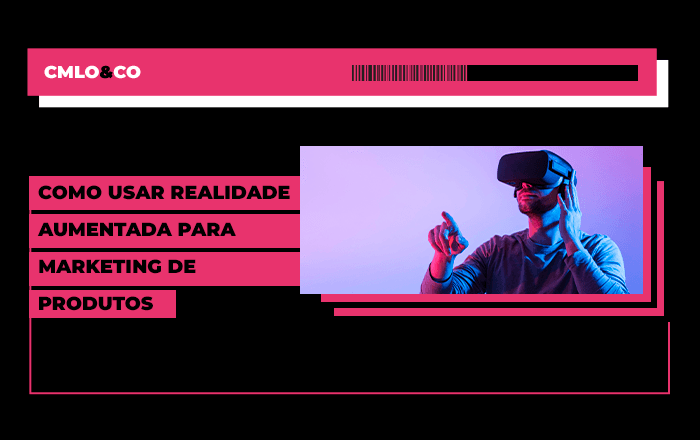Have you noticed that internet ads are increasingly being integrated into the content of websites, social networks and applications? This is digital marketing trends called native advertising, or native advertising.
But what is native advertising? How does it work? What are its advantages? And how can you apply it to your business?

In this article, we'll answer these and other questions about this type of strategy, which can increase customer engagement, conversion and loyalty. Let's go?
Understanding the concept of native advertising
Native advertising is a way of promoting products, services or brands in a discreet, relevant and contextualized way, without interrupting or disrupting the user experience. In other words, it's a type of ad that adapts to the format, style and content of the platform on which it is broadcast, creating visual and editorial harmony.
The aim is to generate value for the target audience by offering useful information, entertainment or solutions to their problems, without being invasive or inconvenient. In this way, it manages to attract the user's attention in a natural and organic way, increasing the chances of conversion.
Practical examples include a book ad on a literary website, an app ad on a social network or a clothing store ad on a fashion blog.
However, native advertising (ads) goes much further than simply running ads in the digital environment. This type of advertising has some key elements that must be taken into account when creating effective campaigns. Here are some of them:
- Relevance: the ad must offer something that is of interest to the target audience of the platform where it will run, be it information, entertainment or a solution to a problem.
- Context: the ad must be related to the platform's theme or category, creating a logical connection with the content.
- Format: the ad must follow the same visual and editorial standard as the platform, using similar colors, fonts, images and language.
- Discretion: the ad should be subtle and non-invasive, without forcing the user's attention or action.
How does native ads work?
Native advertising works differently from traditional ads, such as banners or pop-ups, which are easily identified and ignored by the user. This is because this type of advertising blends in with the editorial content of the medium in which it is broadcast, following the same visual and linguistic standards.
For example, if you're reading an article about travel on a blog, you might come across an advertisement for a travel agency or an airline that offers destinations related to the topic.
Native ads also use targeting techniques to deliver the right ad to the right person at the right time.
This means that it takes into account the user's demographic, behavioral and psychographic characteristics, as well as their browsing history, interests and preferences. In this way, it can offer a personalized and relevant experience for each individual.
Advantages of native ads
Native advertising has a number of advantages for both advertisers and users. Here are some of them:
Increases engagement
As native advertising is integrated into the content the user is consuming, it arouses more interest and curiosity than traditional ads. What's more, as the ad doesn't interrupt the user's browsing, it generates less rejection and more sympathy for the brand.
Improves brand reputation
By offering value to the user, the strategy helps to build a positive brand image, generating trust and credibility. It also avoids rejection or irritation on the part of the user, who is often annoyed by intrusive ads.
Increases reach
Native advertising is versatile and can be broadcast on various communication channels, such as websites, blogs, social networks, apps, podcasts or videos. This allows the brand to reach a larger and more diverse audience, expanding its business possibilities.
Optimizes return on investment (ROI)
As native ads have a higher click-through rate (CTR) than traditional ads, they generate more traffic and conversions for the advertiser's website. In addition, it has a lower cost per impression (CPM) or per action (CPA), which means it spends fewer resources to get better results.
According to a study by Outbrain, the native ads generate 18% more purchase intent than banner ads.
Increases loyalty
As the ad is of high quality and offers value to the user, it creates a positive and lasting relationship between the user and the brand. What's more, as the ad adapts to the format and content of the platform, it generates identification and affinity with the user.
What are the native advertising channels and formats?
There are currently several native advertising formats and channels, each with its own characteristics, advantages and disadvantages. Choosing the best one depends on your product or service, your target audience and your marketing strategy.
Here are some forms of native ads:
- Sponsored articles: these are texts that deal with a topic related to the product or service being advertised, but without explicitly advertising it. They are published on partner websites or blogs.
- Sponsored videos: these are videos that tell a story or show a success story involving the advertised product or service. They are published on video platforms or social networks.
- Sponsored posts: these are posts that promote the advertised product or service on social networks such as Facebook, Instagram or Twitter. They follow the same format as organic posts on the social network, but with a label stating that it is sponsored content.
- In-app ads: these are ads that appear within mobile applications, such as games, utilities or entertainment. They can be banners, videos or offers integrated into the application.
- Search engine ads: these are ads that appear in the search results of Google or other search engines. They are identified as ads, but follow the same format as organic results.
How do you know if an ad is native?
To know whether an ad is native or not, you need to pay attention to a few details. In general, native ads have the following characteristics:
- They follow the same format and style as the content in which they are inserted;
- They have content that is relevant and related to the theme of the medium in which they are broadcast;
- They don't interrupt or impair the user experience;
- They have an indication that it is an advertisement, such as "sponsored", "advertising" or "partner".
Native advertising or banners?
You may be wondering: what's the difference between native advertising and banners? And which is the best option for your business? The answer depends on your objectives and your target audience, but we'll explain the main differences between these two types of ad.
Banners are graphic advertisements that appear in specific places on a website, such as the top, side or footer. They have a standardized format and can contain images, text, videos or animations. The aim of banners is to attract the user's attention and take them to the advertiser's website.
Native advertising, on the other hand, is an ad that adapts to the content in which it is inserted, without standing out or interrupting the user. It has a variable format and can contain text, images, videos or audio. However, its aim is to generate value for the user and create a relationship with them.
So we can say that native ads have some advantages over banners. It offers a higher click-through rate (CTR), a lower bounce rate and a higher conversion rate.
How do you choose the right platform to run your ads?
Choosing the ideal platform for running native ads depends on several factors. For example, you need to consider your target audience, your objective, your budget and your marketing strategy.
In other words, there is no single or definitive answer to this question. However, some tips can help:
Know your audience
First of all, do some market research to understand who your potential customers are, what their demographic, psychographic and behavioral characteristics are, what their needs, desires and pains are, what their preferences and media consumption habits are.
Define your objective with native ads
Next, establish what the expected result of your campaign is. What do you want? Increase your brand awareness? Generate website traffic? Capture qualified leads? Increase sales or customer loyalty?
Estimate your budget
Next, calculate how much you can invest in your campaign, taking into account the fixed and variable costs involved. Remember that each platform has a different billing model, which can be per click (CPC), per impression (CPM), per view (CPV), per action (CPA) or per lead (CPL).
Choose your strategy
Finally, define approach most appropriate for your campaign. To do this, consider the type of ad, the content format, the language used, the segmentation applied and the measurement carried out.
Are you going to apply native advertising to your business? Count on CMLO&CO!
As we've seen in this article, native advertising is an effective strategy for promoting your business online, generating more engagement, credibility, reach and return on investment.
But for that, you need the help of digital marketing expertswho know how to create and serve native ads in a professional and personalized way. Contact CMLO&CO, achieve your goals and stand out in the market.







